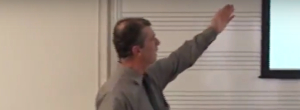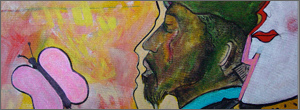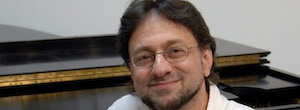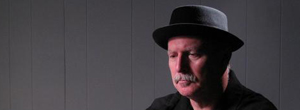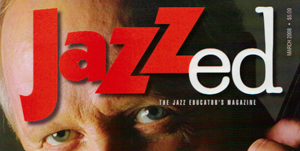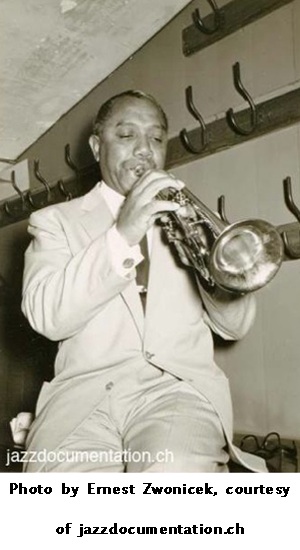 By Chet Williamson:
By Chet Williamson:
Wendell Phillips Culley (Cully)
DOB: January 8, 1906 (Worcester, MA)
DOD: May 8, 1983 (Los Angeles, CA)
Parents: Ambrose E. Cully (1863 - 1925), and Nora A. Gilliam (1871 - 1911). See: http://www.findagrave.com/cgi-bin/fg.cgi?page=gr&GSvcid=174057&GRid=60250813&
Instrument: Trumpet, cornet, and flugelhorn
Education: Worcester Public Schools, Commerce High School (1922-1925)
Worcester playing experience: Performed regularly at the Zion AME Church in Worcester. As a teenager young Wendell played in the Commerce High School band and orchestra (cornet and trumpet), with working groups with his brother Ray (a drummer and singer), and occasionally would fill-in with Miriam “Mamie” Moffitt’s and Her Five Jazz Hounds, a group that featured Jaki Byard’s father John on trombone. He also played in Boots Ward’s Nitehawks.
Playing experience: Boston bands in the ‘20s, including with Preston “Sandy” Sandiford, moved to New York City in 1929, and began working with Joe Steele & his Orchestra, Bill Brown Brownies, Horace Henderson 1930, Cab Calloway 1930-31, Noble Sissle 1931-1937 (also in the early ‘40s – 11 years in total), Lionel Hampton 1944-49, Count Basie 1952-59.
Touring and other highlights: Featured soloist on such jazz classics as “Lil’ Darlin’” with Count Basie, as well as “Airmail Special” and Midnight Sun with Lionel Hampton. Appeared on radio, television and on film including: That’s the Spirit (1933), Murder with Music (1948), Count Basie at Birdland (1956), Count Basie on the Kraft Music Hall (1959), and Count Basie in Zurich (1959).
Backed and recorded with such premier artists as: Sidney Bechet, Charles Mingus, Lester Young, Ben Webster, Illinois Jacquet, Johnny Griffin, Eddie “Lockjaw” Davis, Frank Foster, Stan Getz, Gigi Gryce, Thad Jones, Buck Clayton, Fats Navarro, Dizzy Gillespie, and Kenny Dorham, Bill Evans, and Wes Montgomery.
Backed and recorded with such esteemed singers as: Billie Holiday, Sister Rosetta Tharpe, Lena Horne, Sarah Vaughan, Dinah Washington, Helen Humes, Ella Fitzgerald, Betty Carter, Bing Crosby, Joe Williams, Tony Bennett, Lambert, Ross, and Hendricks, Nat Cole, Johnny Mercer, and Little Jimmy Scott.
Played on such seminal recordings as “Evil Gal Blues” with Dinah Washington, “Everybody’s Somebody’s Fool” with Little Jimmy Scott, “Every Day I Have the Blues” with Joe Williams, and “Minnie the Moocher” with Cab Calloway, and “Hamp’s Blues” with Lionel Hampton. And numerous Basie classics, such as: “Softly with Feeling,” “April in Paris,” “Shining Stockings,” and “Cute,” among many others.
Press quotes (referencing “Lil’ Darlin’”): “The piece began life as a medium-tempo bounce and it was Basie's decision to change it that is held up as an example of this bandleader's great genius: letting someone else write the arrangement, then creating something priceless from that via a few simple but musically astute decisions. As for the fine art of swinging at a ballad tempo, the Culley solo is regarded as something of a testament. Perhaps the trumpeter's ease with all tempos was developed early on through his relationship with his brother Ray Culley, a drummer. Both were members of various local bands in Worcester, Massachusetts in the second half of the '20s.” – Eugene Chadbourne, All Music Guide -- http://www.allmusic.com/artist/wendell-culley-p67749/biography
Softly, with Feeling; One More Once for Wendell
Although he appeared on nearly 200 albums in his impressive career, he was and remains an elusive figure in the annals of jazz. He was a highly respected trumpeter by both colleagues and critics alike, but very little is written about the man, his personal life, and even less about his playing.
Like an invisible man who tip-toes through life unnoticed, Culley nevertheless had a ringside seat to many of the greatest moments of jazz in the 20th century. He was also a major contributor to its pantheon, whose legacy deserves a better fate and his name wider recognition.
Exhibit A. in considering his contributions would certainly be Culley’s historic solo performance on Neal Hefti’s Lil’ Darlin’ performed with the Count Basie Orchestra. So indelible is its mark that generations of young trumpet players from around the world have transcribed its 16 bar line and marveled at its deceptively simple beauty. The secret is in Culley’s rendering, of course. It is pure soul.
“Lil’ Darlin’” with Culley was first recorded in 1957 on The Atomic Mr. Basie album. Writer Donald Clark in his book, The Rise and Fall of Popular Music described the solo as “an object lesson on how to swing at a slow tempo, with its famous muted trumpet solo by Wendell Culley.”
In his book Natural Selection: Gary Giddins on Comedy, Film, Music and Books author setup his description of its majesty this way: “Finally, on the incomparable Lil’ Darlin’ we get to hear Freddy Green loud and clear -- his fleeting arpeggio is the switch that puts the ensemble in motion, indulging textural finesse and commiserating with trumpeter Wendell Culley, whose principal moment this was. It’s a brandy chaser, the perfect finish for a quintessential Basie album.”
The piece is written in the key of G. The tempo marking is slow. The quarter note equals 80-88 on a metronome setting. The solo is assigned to the 4th trumpet, which is to be played in “bucket mute” or “open soft.” For the solo, the player is asked to switch to the “Harmon” mute and given 16 measures to improvise over the “C” and “D” sections. Culley’s performance is delivered in eight phrases culminating slyly with a quote of the melody.
In an interview with writer Bob Bernotas, saxophonist Frank Foster recalled how Lil’ Darlin’ entered the Basie band book, “[It] was brought in as a medium-tempo, sort of bounce tune,” Foster recalled. “Basie listened to that and he said, ‘Let’s slow that down and make a ballad out of it,’ and it got to be one of the band’s most popular songs. Still is. That was the genius of Basie, to listen to something and decide what had to be done with it. And the arranger-composer could only have felt complemented if Basie decided to keep the arrangement, no matter what he did with it, no matter how much he chopped it up or took out of it.” See: http://www.melmartin.com/html_pages/Interviews/foster.html
In his book, Jazz Lives, author Michael Ullman describes Lil’ Darlin’ as having, “an eerie, restrained trumpet solo by Wendell Culley, who alternates shy phrases with long tones permeated by a weird vibrato; the notes sound as if they are coming from the other side of an electric fan.”
For a sound sample see: http://www.youtube.com/watch?v=B-WpXUvsSOk
Ironically, as writer Eugene Chadbourne correctly points out in the All Music Group posting that this was one of the few solo spots Culley was given during his tenure in the Basie band.
It should be noted that Culley submitted this sublime solo at the end of his career. Two years after its recording and more than 40 years in the business, he would be out of music altogether. It should also be pointed out that the trumpeter never released a single recording under his name – which may also explain his shadowy presence.
Worcester
Culley’s life began in Worcester, MA, where he was born in 1906. He was the 10th child born to a mother who reportedly gave birth to as many as 21 children. See: http://rootdigger2011.com/tag/geneablogger/
When young Wendell was born, the family lived at 74 Mulberry Street. (See: Chet picture). The house is located on the east side of Worcester in the Laurel/Clayton neighborhood. He was named after Wendell Phillips, the noted Boston-born abolitionist who, after graduating from Harvard Law, quit a promising law career in the 1830s to dedicate his life to the anti-slavery movement.
His mother was Nora A. Gilliam. His father was Ambrose E. Cully. The couple were originally from New Bern, North Carolina. See: See: http://www.findagrave.com/cgi-bin/fg.cgi?page=gr&GRid=60250077
In the 1906 and 1907 edition of the Worcester Directory, Ambrose E. Culley is listed as a laborer. He would later become the valet to the Higgins, a prominent Worcester family.
The Cullys were a musical family who performed regularly at the Zion AME Church in Worcester. The father was the musical director of the local Jubilee Singers and Mrs. Nora Cully was one of its members.
Among the family’s surviving children three rose to national prominence: Wendell, his younger brother, Ray, who was a drummer and singer in territory bands, and an older sister, actress Zara Cully Brown, best known for her TV role as Mother Olivia in the “Jeffersons.”
However, all of the Cully children were talented, musically and otherwise. Nora Cully, Jr., and Catherine Cully were jazz singers in New York. And, Hannah Cully was a pianist. Another sister, Agnes Cully was a fashion designer in New York. For more than 20 years she was Marian Anderson’s personal designer. See: http://rootdigger2011.com/page/3/?s=agnes+cully
Wendell went to Worcester Public Schools (*possibly Elizabeth Street), and graduated from Commerce High in 1925, where he was the school’s only African-American student.
He played cornet in the Concert Band and is listed in the yearbook as its leader. At the time, it was the largest band of its kind in the city. Culley also played trumpet in the school’s Orchestra A. Note: The flutist in the group was Anne Swan, the sister of the famous Einar Swan (Commerce High 1921), saxophonist for Xavier Cougat and author of the standard, “When Your Lover Has Gone.” See: http://lup.lub.lu.se/luur/download?func=downloadFile&recordOId=532195&fileOId=625282
Family friend Milton Price remembers the Culley family. “I knew the whole family, he said. “They were Worcesterites. They were a very musical family.”
Price also recalled how Wendell played in Boots Ward’s Nitehawks. “That’s where they all started out,” Milton says. “Then my brother took over (trumpeter Barney Price). My brother kind of idolized [Culley] as a trumpeter. I played a little too. I didn’t make it a profession, but still I have the love of music.”
Although there is no document having studied with any one particular teacher, he could have received lessons at the boy’s club or from his high school instructors. More importantly, he could have obtained valuable information in his jazz development from Wallace Moffitt, a cornet player with the Five Jazz Hounds, which was led by his wife Mamie Moffit.
In addition to playing piano and leading the group, she was also a notable educator. During her tenure in New York City, it is said that Noble Sissle and Lionel Hampton were among her students. It is also documented that Culley maintained a lifelong friendship with Mamie Moffitt and family members recall how he visited her shortly before her death in 1954. See: http://www.jazzhistorydatabase.com/content/musicians/moffitt_miriam_mamie/bio.html
After graduation from high school, Culley continued to gig around Worcester and started to make inroads into the Boston scene as well.
Although it is rumored that Culley enrolled in classes at the Boston Conservatory, no record of this exists. While still living in Worcester he did however travel back and forth between gigs, jazz sessions, and rehearsals with various bands. One such group was led by pianist Preston “Sandy” Sandiford. In an interview with Dan Kochakian, published in Whiskey, Women and..., Sandiford recalled his early group.
“In that band then was Howard Johnson on first alto,” he said. “He had a famous brother, Walter Johnson, who played the piano and was one of the first to go to the Coast and play in pictures. We also had Wendell Cully, a trumpet player. I can't remember the tuba player's name. He was an older man. We had tuba before bass. The drummer was Ray Cully or "Leggy" Taylor and Buster Tolliver was on tenor. He was with me quite a few times. These guys were all with me at the Palais-Royale.”
Pianist, bandleader, arranger, Sandiford was one of the more highly acclaimed musicians in Boston during the 1920s and beyond. He was the former president of the Musicians Union Local 535, better known as the black union.
“At that time,” he said, “we had two separate locals: a black union, 535, and a white union, 9. We exchanged men from time to time and worked together.”
Recalling his group featuring the Culleys, he said, “I had a very good band as far as reading music on sight. In those days, songwriters used to bring their music right up to you whether you were on the air or not, wanting you to play their tunes. One night we had a thing called "Zulu Wail." I even remember the publisher: Beboe, Bloden and Lang from the West Coast. Their representative brought it right up and the guys played it on sight. They called up and wanted the band to go out there. They wanted us to record it, everything. But I was too chicken to go and wasn't sure that all the guys would go.”
Howard Johnson, who along with Johnny Hodges and Harry Carney, was considered to be among Boston’s best saxophonists of the day. He too would attest to the band members’ reading prowess saying, “We’d buy sheet music and learn how to transpose. I could play off a violin part before I ever saw an alto saxophone part. The trumpet players, who were around like Wendell Culley, did the same. So when it came to playing from regular parts, we already knew how to transpose.”
Sandiford also mentioned how the band did a great deal of “general gig work.” “We played every club you can think of around here… . I played the swinging belt of clubs on Massachusetts Avenue and the hotels downtown, and made guest appearances at the Latin Quarter.”
In addition to his work with Sandiford, Culley may also have spent time in the Georgia Cotton Pickers led by pianist George Tynes. According to one Boston listing, his bands included such musicians, as drummer, Eddie Deas (who led the Boston Brownies – not to be confused with Bill Brown’s Brownies), and trumpeter Ray Culley (sic), which could be a misprint and really be Wendell. See: http://bostonjazzscene.blogspot.com/2009/12/musiciansthe-major-contributors.html
According to the 1930 Worcester Directory, where Culley is listed as a “musician,” it says he moved that year to New York City. By then, Wendell was married to Violet Cecilia Jones and the couple had a daughter, Christine. The young family first resided in Wendell’s in-laws home at 41 West 137th Street. That same year they moved to 2956 Convent Avenue #65. The owner of the apartments recently spoke with family members and confirmed that, “a Culley family” had lived there from 1930 to 2009. (Christine died in 2009.)
Wendell’s last known Worcester address was at 31 Laurel Street, which is now Plumley Village. It may be interesting to note that the Byard family is listed at 39 Laurel Street. Reggie Walley lived on nearby Carroll Street. Howie Jefferson resided at 87 Clayton Street and the Price family lived at 53 Clayton. It should also be noted that the legendary Saxtrum Club was later located on the corner of Laurel and Clayton.
“We had our own black community back then,” Milton Price recalled. “When I was a kid, I remember seeing Major Taylor up George Street Hill,” he adds, referring to the former world champion cyclist, who trained by pumping the pedals up its steep hill. See: http://jazzhistorydatabase.com/blog-chet/?p=19
Culley actually moved to New York City in 1929. His first professional gig of note was with Bill Brown’s Brownies, a territory band based out of Pennsylvania. Brown was a trombone player and very little is known of the band; accept for the fact that they performed at the famous Savoy Ballroom in Harlem and their touring got them as far as Chicago. They are best known as being a one hit wonder, with their classic recording of Hot Lips (without Culley).
That same year, Culley recorded with Bostonian Joe Steele & his Orchestra, which may possibly be his first record date. See: http://www.redhotjazz.com/steele.html For sound clip see: http://www.youtube.com/watch?v=JKAUNGMB0X8
Horace Henderson
In 1930, Culley divided his time between the Horace Henderson band and the Cab Calloway aggregation. Horace Henderson was the younger brother of the more famous, Fletcher Henderson. Horace was also a pianist, arranger and composer who had written some of the more historic big band arrangements in all of jazz, especially those written for Benny Goodman. According to his wife, Angell, Horace Henderson was responsible for such monumental pieces as ''Sing, Sing, Sing,'' ''String of Pearls,'' ''Japanese Sandman,'' and ''Walk, Jennie, Walk,'' a showcase written specifically for Gene Krupa. See: http://www.nytimes.com/1988/09/16/obituaries/horace-henderson-83-a-pianist-and-arranger-for-the-jazz-greats.html
In his book, Trumpet Story (Northeastern University Press, 1991), written by fellow horn man Bill Coleman, the trumpeter recalls his days in the band and mentions Culley. “I got a proposition from Horace Henderson to join the band,” he wrote. “Horace was playing at the Dunbar Palace, formerly the Bamboo Inn, which was a small dance hall on 7th Avenue, between 139th and 140th Streets. He was using two trumpets – Jacques “Jack” Butler and Gus McClung – when he decided to add another one. But Gus left and was replaced by Wendell Culley, a musician from Boston, who was first-chair man; he had a beautiful tone and so much technique that Horace gave him many solos on ballad numbers.”
Cab Calloway
Later that same year, Culley received a call to join Cab Calloway, a band with a national reputation, which would bring Culley greater exposure on the national stage.
Often described as a lead “plunger soloist,” in his early days, he was a master of open trumpet playing. In his book The Swing Era: The Development of Jazz 1930-1945 by Gunther Schuller mentions Culley with Calloway. “Wendell Culley was at this time the band’s “straight” player. His almost classical concert band style and his clean trills can be heard on the intro and coda of “St. James Infirmary” and “Doin the Rumba,” respectively.”
During Culley’s tenure, Cab Calloway and his Cotton Club Orchestra featured Roger Quincy Dickerson, Lammar Wright, and Culley trumpets; De Priest Wheeler (trombone); William Thornton Blue (clarinet, alto sax); Andrew Brown (bass clarinet, tenor sax, baritone sax); Walter "Foots" Thomas (clarinet, alto sax, tenor sax, baritone sax); Earres Prince (piano); Morris White (banjo); Jimmy Smith (tuba, bass); Leroy Maxey (drums); with Cab Calloway on vocals. See: http://grammercy.com/app/albums/view/151/Roots-Of-Jazz-Scat-Vocals
Check out a performance of “Minnie the Moocher” in a short clip of the band in the opening of a Betty Boop cartoon at: http://www.youtube.com/watch?v=1fprOGTXh8E
And a performance of St. James Infirmary at: http://www.youtube.com/watch?v=s_XYweNu3oQ
Noble Sissle
According to trumpeter and writer John Chilton in an article on Culley in Who’s Who of Jazz (1998), the Worcester-born Culley did not stay long with Calloway, opting to leave the band in the summer of 1931. He then hooked up with pianist Noble Sissle and his International Orchestra, an ensemble he would spend two stints with, adding up to more than a decade.
His first tour of duty with the band was from 1931-37; he also played with Sissle in the early 1940s and late ‘40s into the ‘50s. You can see Culley with the band in the 1933 film That’s the Spirit. Originally released by Vitaphone Corp., this fictional short features such tunes as “St. Louis Blues,” “A Shanty in Old Shanty Town” and “Tiger Rag.”
See: http://www.youtube.com/watch?v=XXuLmu77ZnI
Culley had the good fortune to appear in the band with the legendary soprano saxophonist Sidney Bechet. In 1934, the band recorded a number of sides for Decca in Chicago, including the Bechet originals Under the Creole Moon and Tain't a Fit Night Out for Man or Beast. See: http://www.redhotjazz.com/sissleio.html
Also see: http://www.youtube.com/watch?v=1ULO4_Yw194
In 1935, songstress Lena Horne joined the band. Writer John Chilton in his book, From Sidney Bechet: The Wizard of Jazz, he notes, “The session on 11 March 1936 produced five titles. “That’s What Love Did to Me” is a slow, romantic ballad which marks Lena Horne’s recording debut. The best music on this title is the high-register muted playing of the opening melody by trumpeter Wendell Culley.” See: http://books.google.com/books?id=TzQukIOsbvEC&pg=PA102&dq=Wendell+Culley&hl=en&sa=X&ei=MMBgT8z7Cab00gHOvuyiBw&ved=0CFIQ6AEwBDgK#v=onepage&q=Wendell%20Culley&f=false
Lionel Hampton
Culley’s next stop was Lionel Hampton’s high flying orchestra, a band that featured many of the great soloists and jazz artists of the day, including Kenny Dorham, Charles Mingus, and Johnny Griffin. It also featured singers Little Jimmy Scott and Betty Carter.
Culley worked with Hampton from 1944-49. For a list of Hampton personnel see: http://home.swipnet.se/dooji/jubilee301-433.pdf
For a list of Culley recordings with Hampton see: http://www.ne.jp/asahi/wes.fan/club/right/hampton/hamp_b1.htm
Also see: http://www.youtube.com/watch?v=KlIhbK3xHCA
Lionel Hampton w/Betty Carter see: http://www.youtube.com/watch?v=5K0rETnAfck
Fellow trumpeter Snooky Young, who would later work along side of Culley in the Basie, was also in the trumpet section of the Hampton band. In a profile of Young in Jazz Times magazine, he mentions that some of his more poignant memories were sitting in bands with Culley, stating: "He had a beautiful tone, more classical-like," said Young. See: Jazz Times, Vol. 36. Check out a Chuck Stewart’s photograph of the two trumpeters at: http://newarkwww.rutgers.edu/ijs/cb/stewart.htm
Count Basie
In the early 1950s, Count Basie yearning to reorganize his orchestra, broke up his octet, a great little big band featuring Clark Terry, Buddy DeFranco and Wardell Gray, The new band came to be known as the New Testament Band and Culley got the call to join the band in the trumpet section. It was a gig that would take him around the world. It would see extraordinary highlights for Culley, but sadly, crushing low lights as well, marking the end of his musical career at the age of 53. See: http://www.basieband.org/history.html
Culley recorded a series of albums with Basie, performing classic arrangements by Ernie Wilkins, Neal Hefti, Sammy Nestico and Quincy Jones to kings and presidents, and nameless crowds worldwide. He also performed with the best in business, including with Billie Holiday at Carnegie Hall in 1954. See: http://www.attictoys.com/jazz/BP53-63.HTM
Culley’s high-water mark will be seen as his unforgettable soft-shoe solo on “Lil’ Darlin’” a piece that band mate Marshall Royal summed up thusly: “Even though the Basie band is expected to drive and shout, you can call one particular number on any dance floor anywhere, in any club or at any concert, and you will get instant applause at the start of the number. Overall, it’s as popular as any Basie has in his book. We’ve been playing it for years.” See: http://count-basie.blogspot.com/
Milton Price’s nephew, Elwood “Bunny” Price Jr. (former trumpeter and bassist), remembers Wendell Culley. “He was before my dad’s time,” he says. “I met Wendell at the Newport Jazz Festival. He was with Basie at the time.
“It was a great night. When the band took a break – I can’t remember all the details – but we went over to talk to Wendell. My dad wanted to see him.”
Price says his dad in many ways followed in Culley’s footsteps. “He played in church. My dad played in church. Then I was the next one to play in church. The black churches always had somebody playing. AME Zion on Belmont Street.” See: http://jazzhistorydatabase.com/blog-chet/?p=19
The Newport performance has been captured on tape for all to hear. It is an extraordinary show, complete with appearance by singers Joe Williams, and guest spots by Lambert, Ross, and Hendricks. See: http://www.wolfgangsvault.com/count-basie-and-his-orchestra/concerts/newport-jazz-festival-july-02-1959.html
See: http://www.youtube.com/watch?v=iNz1_xJ4Ur8
Retirement
By all accounts, especially from family members and those who knew and loved him, Culley was a quietly proud man who knew exactly who he was and what he had accomplished. The straw that broke his musical back happened in Las Vegas. The story is recounted by his niece Yvette Porter Moore in an interview conducted by Rich Falco and WPI students.
In 1959, in the heat of the civil rights struggles, inconceivably, Culley was treated like a second class citizen and denied front door admission to a Vegas hotel. Culley had enough. He said no and promptly walked out and off the band.
He retired from music and by himself moved to Los Angeles. Settling in California he worked in the insurance business. Wendell Phillips Cully spent his last days at the local YMCA, where he passed away.
He died in 1983 (on the same date as his father and a sister Agnes, May 8). Wendell is buried at Rose Hills Memorial Park, Whittier, Los Angeles County, California. There is no headstone marking the trumpeter’s gravesite. See: http://www.findagrave.com/cgi-bin/fg.cgi?page=gr&GRid=60250077
Wendell Culley Notes
Photos:
- "Let's All Get Together and Chip In, Shall We?." Jazz Lives. N.p., 6 Feb. 2012. Web. <http://jazzlives.wordpress.com/tag/wendell-culley/>
- Ronquillo, Ulysses. Count Basie in Geneva 1956. N.p., 16 Dec. 2011. Web. <http://crownpropeller.wordpress.com/2011/11/20/count-basie-in-geneva-1956/#more-548>
Recordings/Discography:
- "1949." Wes Montgomery Discography. N.p., n.d. Web. <http://www.ne.jp/asahi/wes.fan/club/right/hampton/hamp_b1.htm>.
- Basie, Count. "Swingin' at Newport." N.p., 1957. Web. <http://www.youtube.com/watch?v=iNz1_xJ4Ur8>
- Bechet, Sydney. "Tain't a Fit Night Out for Man or Beast." N.p., n.d. Web. <http://www.youtube.com/watch?v=1ULO4_Yw194>.
- Calloway, Cab. "Minnie the Moocher." N.p., 1931. Web. <http://www.youtube.com/watch?v=1fprOGTXh8E>
- Calloway, Cab. "St. James Infirmary." N.p., n.d. Web. <http://www.youtube.com/watch?v=s_XYweNu3oQ>
- Chilton, John. Sidney Bechet: The Wizard of Jazz. N.p.: Da Capo Press, Inc., 1996. Web. <http://books.google.com/books?id=TzQukIOsbvEC&pg= PA102&dq=Wendell+Culley&hl=en&sa=X&ei=MMBgT8z7Cab00gHOvuyiBw&ved=0CFIQ6AEwBDgK#v=onepage&q=Wendell%20Culley&f=false>
- Collins, Mal. "The Recordings of Sidney Bechet." SidneyBechet.org. N.p., June 2011. Web. http://www.sidneybechet.org/wp-content/uploads/SidneyBechet-Discography.pdf
- "Count Basie and His Orchestra Concert." Wolfgang's Vault. N.p., n.d. Web. <http://www.wolfgangsvault.com/count-basie-and-his-orchestra/concerts/newport-jazz-festival-july-02-1959.html>
- Hampton, Lionel. "Midnight Sun." N.p., n.d. Web. <http://www.youtube.com/watch?v=KlIhbK3xHCA>
- Hoffmann, Franz. "Part 1: Complete Feature Films." RainerJazz.com. N.p., n.d. Web. <http://www.rainerjazz.com/pdf/AllenDVD.pdf>
- "Jamin' Uptown Pt. 1." Swing City Episode #4A. N.p., n.d. Web. <http://www.youtube.com/watch?v=5K0rETnAfck>.
- "Joe Steele and his Orchestra." RedHotJazz.com. N.p., n.d. Web. <http://www.redhotjazz.com/steele.html>
- Joe Steele and his Orchestra. "Top and Bottom." 1929. Web. http://www.youtube.com/watch?v=JKAUNGMB0X8
- "Live: Count Basie & His Orchestra featuring Joe Williams on The Kraft Music Hall." N.p., n.d. Web. <http://www.youtube.com/watch?v=lpeaw2fQo0A>.
- Mills, Irving. "Irving Mills Presents." N.p., 1931. Web. <http://www.youtube.com/watch?v=kEoTwTYnc6g&feature=watch_response>
- "Nat King Cole: An Informal Discography." N.p., n.d. Web. <http://apileocole.alongthehall.com/sessions/session1958.html>
- "Noble Sissle and his Orchestra Discography." RedHotJazz.com. N.p., n.d. Web. <http://www.redhotjazz.com/sissleo.html>
- Noble Sissle Band, Skippy Williams Band. "1948 Murder With Music." N.p., n.d. Web. <http://www.youtube.com/watch?v=0gMqyg3UY3Q>
- Noble Sissle Orchesta. "That's the Spirit." N.p., 1933. Web. <http://www.youtube.com/watch?v=XXuLmu77ZnI>.
- "Shorts." JazzOnFilm.com. N.p., n.d. Web. <http://www.jazzonfilm.com/shorts.html>.
- "Various Artists: Roots of Jazz Scat Vocals." Grammercy Records. N.p., n.d. Web. <http://grammercy.com/app/albums/view/151/Roots-Of-Jazz-Scat-Vocals>
- "Wes Montgomery Discography." JazzDisco.org. N.p., 2003-2012. Web. <http://www.jazzdisco.org/wes-montgomery/discography/>
Primary Sources:
- Milton Price, Elwood “Bunny” Price, Dick Odgren video interview, Nov. 2, 2011
- Ray Cully Junior telephone interview with Richard Falco Oct. 17, 2011
- Yvette Porter Moore video interview (via WIMBA) with Richard Falco Nov. 20, 2011
- Yvette Porter Moore telephone interview with Richard Falco Oct. 15, 2011
- Photos by Chet Williamson
Sources:
- "An Overview of Carnegie Hall." Carnegie Hall. Carnegie Hall Corporation, 2001-2009. Web. <http://www.carnegiehall.org/honor/list/index.aspx>.
- "Archive for Wendell Culley." Crown Propeller's Blog. N.p., n.d. Web. <http://crownpropeller.wordpress.com/tag/wendell-culley/>.
- "Archive: November, 2011." Digging Roots: My Family History. N.p., n.d. Web. <http://rootdigger2011.com/2011/11/>.
- Bernotas, Bob. "Frank Foster." (1999). Web. <http://www.melmartin.com/html_pages/Interviews/foster.html>
- Bjerstedt, Sven. "Who was Einar Swan?." N.p., n.d. Web. <http://lup.lub.lu.se/luur/download?func=downloadFile&recordOId=532195&fileOId=625282>
- Book John Chilton an article on Culley in Who’s Who of Jazz (1998)
- Book The Swing Era: The Development of Jazz 1930-1945 by Gunther Schuller 1930 Worcester Directory
- Brooks, Tim. Lost Sounds: Black and the Birth of the Recording Industry, 1890-1919. N.p.: Tim Brooks, 2004. Web. http://books.google.com/books?id=r-k9ysIaaEUC&pg=PA388&lpg=PA388&dq=Noble+Sissle+Wendell+Culley+That's+the+Spirit+Cora&source=bl&ots=T51gBU2dkN&sig=P7c9YB9e_yNZzqQkMQJLihEvneo&hl=en&ei=gqLXTrK6B4Xc0QH
- "Cab Callaway." The Hi de Ho Blog. N.p., n.d. Web. <http://thehidehoblog.zumablog.com/index.php?sujet_id=7574>
- Chadbourne, Eugene. "Wendell Culley Biography." AllMusic.com. N.p., n.d. Web. <http://www.allmusic.com/artist/wendell-culley-p67749/biography>
- Clear, Rebecca D. Jazz on Film and Video in the Library of Congress. N.p.: n.p., 1993. Web. <http://books.google.com/books?id=NpQVuUAc1y8C&pg=PA138 &dq=Wendell+Culley&hl=en&sa=X&ei=isZgT5C2N-Xe0QG7re2ECw&ved= 0CFkQ6AEwBjgU#v=onepage&q=Wendell%20Culley&f=false>.
- Digging Roots: My Family History. N.p., n.d. Web. <http://rootdigger2011.com/tag/geneablogger/>
- Donald Clark in his book, The Rise and Fall of Popular Music
- Evansmo, Jan. The History of Jazz Tenor Saxophone Black Artists, 1917-1934. N.p.: Jan Evansmo, 1996. Web. <http://www.jazzarcheology.com/artists/tenorsax_1917_1934.pdf>.
- Fraser, C. Gerald. "Horace Henderson, 83." New York Times 16 Sept. 1988. Web. <http://www.nytimes.com/1988/09/16/obituaries/horace-henderson-83-a-pianist-and-arranger-for-the-jazz-greats.html>
- "History." The Legendary Count Basie Orchestra. N.p., n.d. Web. <http://web.archive.org/web/20150328075559/http://www.basieband.org/history.html>
- John Chilton in his book, From Sidney Bechet: The Wizard of Jazz
- "Lionel Hampton Personnel." N.p., n.d. Web. <http://home.swipnet.se/dooji/jubilee301-433.pdf
- Mack, Roy, dir. That's the Spirit. 1932. Web. <http://lcweb2.loc.gov/diglib/ihas/loc.natlib.jots.200019960/default.html>.
- Michael Ullman in his book, Jazz Lives
- "Miriam 'Mamie' Moffitt." Jazz History Database. N.p., n.d. Web. <http://www.jazzhistorydatabase.com/content/musicians/moffitt_miriam_mamie/bio.html>
- Moore, Yvette P. "Ambrose E Cully." Find A Grave. N.p., 18 Oct. 2010. Web. <http://www.findagrave.com/cgi-bin/fg.cgi?page=gr&GSvcid= 174057&GRid=60250813&>
- Moore, Yvette P. "Wendell Phillip (Cully) Culley." Find A Grave. N.p., 18 Oct. 2010. Web. <http://www.findagrave.com/cgibin/fg.cgi?page=gr&Grid=602500 77>
- "Musicians-The Major Contributors." Boston Jazz Scene. N.p., 5 Oct. 2011. Web. <http://bostonjazzscene.blogspot.com/2009/12/musiciansthe-major-contributors.html>
- "Research Day One." The Cully Family. N.p., 10 Oct. 2011. Web. <http://www.thecullyfamily.com/2011/10/research-day-one-higgins-family-wendell.html>
- Sheridan, Chris. "Book Excerpt: Count Basie - A Bio-Discography." FreddieGreen.org. N.p., 1986. <http://www.freddiegreen.org/book/sheridan.html.>
- Stewart, Chuck. "Chuck Stewart Photo Essay." One More Once. Rutgers University Libraries, 2004. Web. <http://newarkwww.rutgers.edu/ijs/cb/stewart.htm>.
- "The Benny Powell Discography." AtticToys.com. N.p., 8 Mar. 2012. Web. <http://www.attictoys.com/jazz/BP53-63.HTM>
- "The Guide to Jazz in Film Bibliography: A-C." The Library of Congress. N.p., 31 Aug. 2010. Web. <http://www.loc.gov/rr/mopic/findaid/jazz/a-c.html>
- "Through the Years with Preston Sandiford." Whiskey, Women, and. 15 Dec. (1985). Web. <http://nejazz.org/pdf/PrestonSandiford.pdf>.
- "Trace Your Roots - Yvette Porter-Moore." MsTracyAllen. N.p., n.d. Web. <http://mstracyallen.com/trace-your-roots-P462>.
VERY SPECIAL THANK YOU TO YVETTE PORTER MOORE, GRAND NEICE OF WENDELL CULLEY FOR HER SIGNIFICANT CONTRIBUTION TO THIS COLLECTION.
VERY SPECIAL THANK YOU TO CHET WILLIAMSON FOR HIS SIGNIFICANT CONTRIBUTION TO THIS COLLECTION.



